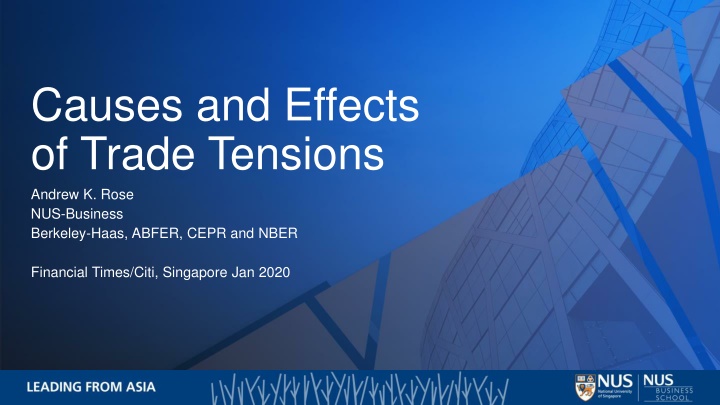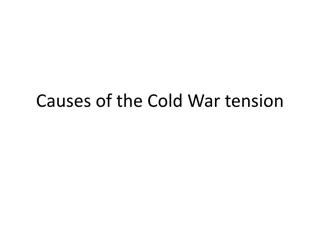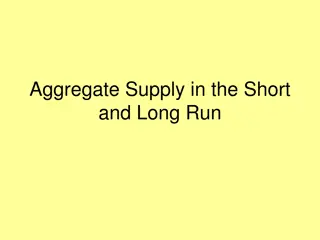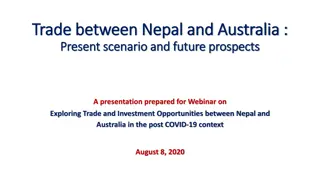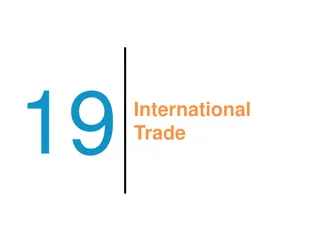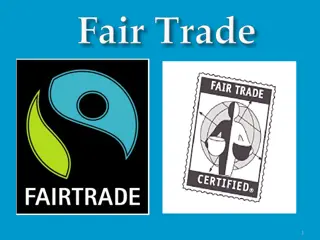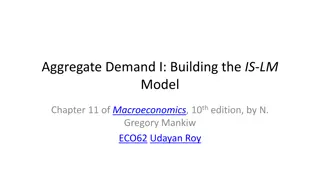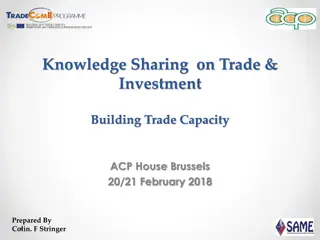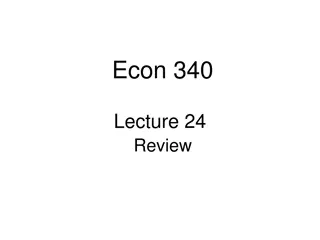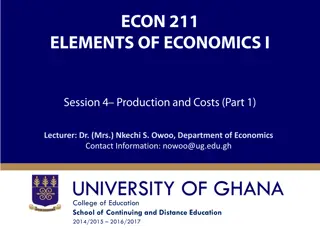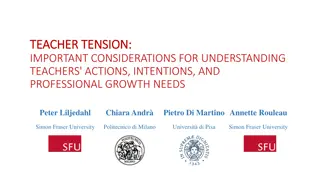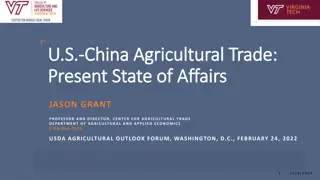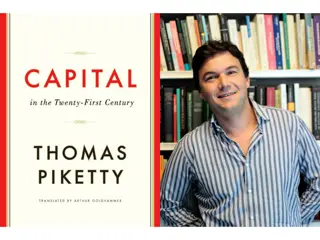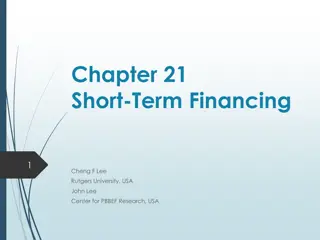Causes and Effects of Trade Tensions: Declining Trade Growth and Short-Run Factors
The causes of trade tensions, including declining trade growth, natural barriers, technological stagnation, and short-run factors like protectionism, currency fluctuations, and policy-induced uncertainty. Understand the impact on global trade dynamics and investments."
Download Presentation

Please find below an Image/Link to download the presentation.
The content on the website is provided AS IS for your information and personal use only. It may not be sold, licensed, or shared on other websites without obtaining consent from the author.If you encounter any issues during the download, it is possible that the publisher has removed the file from their server.
You are allowed to download the files provided on this website for personal or commercial use, subject to the condition that they are used lawfully. All files are the property of their respective owners.
The content on the website is provided AS IS for your information and personal use only. It may not be sold, licensed, or shared on other websites without obtaining consent from the author.
E N D
Presentation Transcript
Causes and Effects of Trade Tensions Andrew K. Rose NUS-Business Berkeley-Haas, ABFER, CEPR and NBER Financial Times/Citi, Singapore Jan 2020
Declining Trade Growth: Long Run Causes Not all barriers to trade are artificial impediments (protectionism) Some are natural and all are persistent 1. Slowing Growth of Tradeables Most trade is in goods (finished or not) Productivity gains in secondary production have slowed 2. Demand shifts from goods to services as income rises Especially true as populations age Many services are hard to trade, very hard to liberalize/harmonize/regulate 3. Stalled technological progress in transportation costs reduction Few significant changes since containerization
Long Run Causes, more Three Notes 1. A striking long run omission: declining artificial trade barriers Protectionism trended down from 1945 on no more! Not JUST Trump Doha never completed 2. Climate Change could also raise transport costs 3. Savings Glut from Germany, China, Global imbalances mean global trade tensions
Short Run Causes of Trade Woes 1. Under-appreciated: absence of serious recent liberalization Trade liberalization is like riding a bicycle (Bergsten) 2. Rise of US dollar (Gopinath) US fiscal expansion; issuer of safe assets; European, Asian woes When US $ appreciates, trade tends to shrink US $ appreciated since 2015
Short Run Causes of Trade Woes, cntd 3. Explicit protectionism (duh!) 4. Policy-induced uncertainty, a consequence of protectionism: Trump Exacerbated by lack of institutional support for rules-based nature system (WTO appellate judges) Enduring since What does victory in trade war consist in? Objective? US trade balance (given savings and investment)?
This Uncertainty is Induced and Costly 1. Lowers physical investment (hence growth slowdown) Much evidence This further lowers trade, since capital goods disproportionately traded; vicious cycle 2. Lowers firm investment in supply chains (make not buy) General unraveling of efficient/complex international supply chains
Summary: Causes of Trade Tension Long Run 1. Slowing Growth of Tradeables, transition from Goods to Services 2. Stalled Technological Progress in Transport Costs 3. Stalled Liberalization, Savings Glut Short Run 1. Protectionism 2. Rise of US $ 3. Policy-induced Uncertainty All likely to be persistent
Effects of Trade Tensions on Financial Stability Most Visible and Immediate Consequence of Trade Tension is Macro Slower growth because of uncertainty Heightened possibility of macro downturn, recession Hence more financial instability
Persistent Costs of Trade Reduction Lower trade integration is costly in income, productivity, welfare Mostly small now Costs are mostly in long run supply-side because of foregone productivity and competition (also foregone consumer variety) Likely to cumulate (consider quasi-autarkies: Cuba, North Korea, Venezuela) Tangent: current protectionism is NOT counter-cyclic US perpetrating during long boom with low unemployment and inflation Unleashed protectionist pressures may be MUCH higher during next recession Could lead to bigger future negative welfare consequences
Two Other Consequences of Slowing Trade 1. Business Cycle Synchronization 2. Financial Stability Both Longer Run
Business Cycle Synchronization is Endogenous BCS is affected by trade (Frankel-Rose) More trade leads to higher BCS in practice Less trade integration means more idiosyncratic business cycles, more diversifiable risk
Also, Financial Integration follows Real Integration In theory and practice, real integration precedes, causes financial Empirically overwhelming: liberalize goods markets before services; both before factor markets (capital and labor) McKinnon s sequencing: international financial liberalization the final step Financial integration a result of policy choices, typically following real integration So a world with less real (G&S) integration is likely to also be less financially integrated
Financial Integration Falls with Trade Tensions As with goods and services, less integration has its costs Savings flow less efficiently to good investments Risks can t be spread as widely across borders But considerable skepticism about size of benefits Also, considerable risk (contagion) Different from trade integration
Effects of Trade Tension on Financial Stability 1. Short Run, Bad: higher likelihood of recession, raising financial instability 2. Long Run, Bad and Good: less trade, lower income and welfare But may enhance real and financial stability Import fewer real shocks; financial repression bad for welfare but good for stability 3. Long Run, Good: less globally coordinated business cycles More easily diversifiable risk 4. Long Run, Arguable: less financial integration Fewer gains from integration (uncertain magnitudes) Fewer risks from contagion
